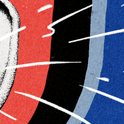(Oxford University Press, £25)
Public debate about genetic engineering is as subtle as a cat fight. For intelligent discussion, newspapers and television might altogether be skipped. The most astute consideration of cloning to date is to be found in a new novel.
The author is Kazuo Ishiguro, famous for capturing the end of England's old social order in The Remains of the Day. Given his appreciation for dying traditions, Ishiguro might not seem a likely candidate to write about speculative genetics. He has said that he scarcely ever reads science fiction, and has no interest in time machines and nanobots. Expect none of that in his new book. Never Let Me Go is set in England in the late 1990s, and captures every hill and crag. In such a familiar setting, bathed in its ordinary fog, you would scarcely think about clones—were the novel not narrated by one.
Kathy H is a "carer." She's been a carer for 11 years, ever since she turned 20, tending to other human clones in the final months of their lives. Looking at Kathy, you would not picture test tubes or enucleated egg cells. If you met her, you might talk about the thrift shops in Norfolk or the songs of Judy Bridgewater. Alternatively, she could discuss literature, from Hardy to Drabble. You would find Kathy bright, though not ostentatiously so. You might never guess how unusual it is to survive as a carer for so many years.
Take her friends. They were carers for half a decade at most—and now they are dead. They have "completed." Most clones complete after their second or third "donation"; the strongest survive to give their fourth. The donations they give are their vital organs, and it is for those organs that they have been bred.
Every effort is put into making the process agreeable. Clones are raised on estates which resemble boarding schools, by guardians who act as instructors, offering a well-rounded education. After graduation and some training, they become carers, like Kathy, until called upon for their donations. While those procedures are not painless, they are performed under anaesthesia by doctors using the latest surgical procedures, with time given for recovery between operations.
All of this is merely background, taken for granted by Kathy and her friends, as we take for granted our own heritage. The purpose of her memoir—Ishiguro's novel—is not to fulminate, or even to complain. She is telling her story simply to recollect everything that has happened in her 31 years. There is no one left with whom she can reminisce. A carer's life is one of constant loss. She will be retiring at the end of the year, and then there will be her donations, the systematic removal of everything inside her. Before that happens, she wants to savour all that she has had and done, to appreciate "just how lucky we'd been." What could be more human?
Kazuo Ishiguro, like Leo Tolstoy or Henry James, has a talent for marking social undercurrents without remarking on them. In Ishiguro's novels, as in life, one feels more than one knows. So while Kathy's story is not extraordinary—beyond those extra few years she has been granted for her aptitude as a carer—it is special. It is special to her because it is her life, and special to the reader because the reader shares, vicariously, viscerally, the experience of it.
The story begins at Hailsham, the estate where Kathy grows up with her best friend Ruth, and Ruth's boyfriend, Tommy. Kathy loves Tommy, and Ruth's attachment to him is partly motivated by that. As time passes, their three-way relationship grows more complicated. Tommy can confide in Kathy about Ruth in a way that Ruth cannot abide. But as her jealousy drives Kathy away, she loses her need for Tommy. They all drift apart, only to be drawn together a decade later, when Kathy becomes Ruth's carer, and the spectre of second and third donations causes them to seek out Tommy together, to set their love triangle right before it is too late.
Some details of their lives are so innocuous as barely to register: an emphasis on hygiene in school, and weekly medicals to ensure their future suitability as donors. Others, such as career, loom larger: the realisation, at an early age, that they will never be doctors or airline pilots or grocery clerks like the people they see on television. And then there is sex: "We had to be extremely careful about having sex in the outside world, especially with people who weren't students [clones], because out there sex meant all sorts of things. Out there people were fighting and killing each other over who had sex with whom. And the reason it meant so much—so much more than, say, dancing or table tennis—was because the people out there were different from us students: they could have babies from sex."
The ability to experience intimacy and to feel love, but not to have children, is compounded by an anxiety over origins. While lacking proper parents, clones are not outright fabrications. Their DNA comes from someone, and the pursuit of "possibles," while generally unsuccessful, is practically a rite of passage for them. "[We] believed that when you saw the person you were copied from," Kathy explains, "you'd get some insight into who you were deep down, and maybe too, you'd see something of what your life held in store." Not that finding one's possible would alter matters. It is never a question of avoiding donations. Of that, there is no discussion. "If you're to have decent lives," one of Kathy's guardians instructs her wards, "you have to know who you are and what lies ahead of you." There's no revolt because there is no oppression. There are no secrets. The system is completely open.
It is in this respect that Ishiguro's novel is most haunting, and most true. On the face of it, the lack of rebellion strains credulity. If his clones are intellectually and emotionally indistinguishable from ordinary humans, one would expect a spectrum of opinions about donations.
We are never told directly why Ishiguro's clones go to the slaughter so willingly. But this apparent weakness is at the root of the novel's genius. Our incredulity about the clones' complacency, like European incredulity about Nazi atrocities, tells us something crucial about ourselves. We are as blocked by our assumptions as Ishiguro's clones are by theirs. We cannot believe what is happening. And what we cannot believe, we seldom think to question when it occurs.
There are obvious precedents for this kind of speculative fiction in the two canonical 20th-century visions of dystopia, Aldous Huxley's Brave New World and George Orwell's 1984. Yet Ishiguro's novel has less in common with these than it does with James's Portrait of a Lady or Tolstoy's Anna Karenina. This is not to put Ishiguro's book in their league—no novel of his generation belongs there—but rather to say that, unlike Brave New World and 1984, Never Let Me Go is fundamentally a social novel, not a satire.
The social novel is an oddity in our era. It was born when motives and mores were largely unstated, and thrived on revealing what could not be said. Over the past century, those qualities have been lost. Whatever is not explicit is ironic. Unless a story is set in the past, or the characters are old-fashioned (see The Remains of the Day), there is not much for the social novel to do: in the context of a society intent on telling it like it is, fiction is redundant if it is not satirical.
What Ishiguro has done in Never Let Me Go is to find an unexpected new use for old tools. He has recognised that the moral dilemmas in our technological age are every bit as nuanced as the social exchanges of the Victorian era, and that the fine tuning of the social novel can capture the unspoken assumptions underlying matters such as cloning. For all the obvious differences between the Victorian parlour and the genetics laboratory, the rate of social change at the turn of the last century is similar to the rate of technological change at the turn of the millennium. Each is mired in uncertainty. Blunt discourse cannot manage. The novel, subtle and lithe, can assume a privileged place. It is the right voice.
The partisans for or against cloning will not like Ishiguro's novel. Kathy's world is by no means a utopia, but neither is it quite dystopic. Ishiguro has said that his motivation for writing this story was an interest in "compressing" the fate we all share, our mortality, into 30 years. He seems to be asking whether a full life can be lived in that abbreviated span and, by extension, what it means for a life to be full.
From our perspective, Kathy's existence seems pointless: all that cultivation only to have her organs harvested. Against this stands her memoir, testament to experiences uniquely hers. Even more disturbing than the matter of whether we have the right to end the life of someone who seems so human is the question of whether she really is any worse off than us. Should quantity of time on earth be the prime measure of life? The presumption that a longer life is inherently better is, after all, what motivates the cloning programme in Ishiguro's novel, and in real laboratories.
Kathy H is never a victim of such assumptions. In that respect, her brief life is exemplary.











